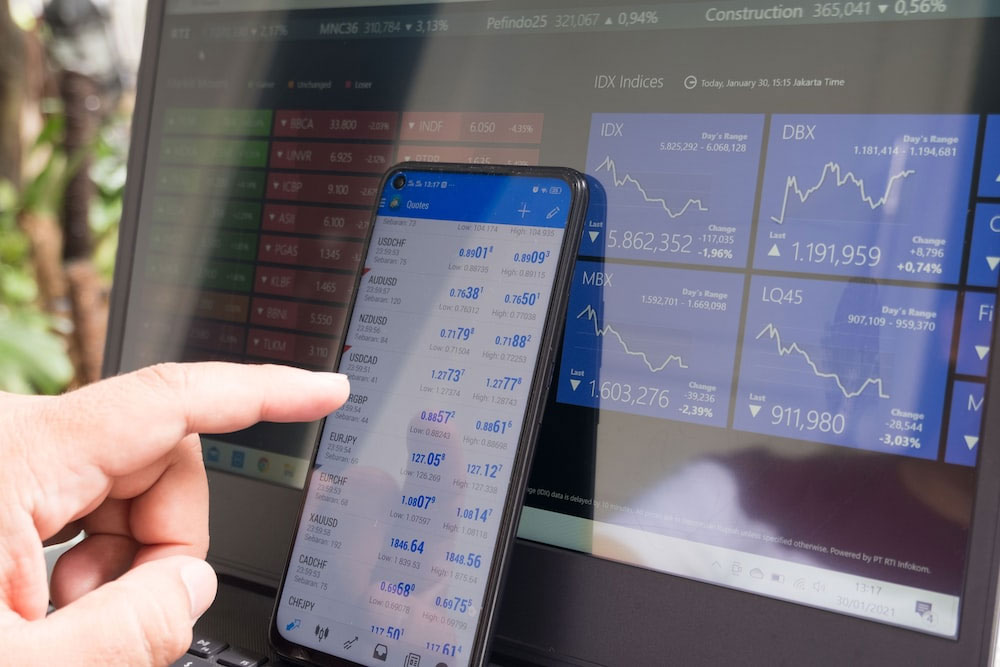What is a Call Option
Jan 05, 2024 By Triston Martin
Do you know what a call option is and whether it can be used to your benefit in the stock market? A call option is one of the most commonly-used instruments for trading stocks and derivatives due to its flexibility in allowing investors to speculate on the price movements of an underlying asset. With a thorough understanding of what a call option entails and its potential risks, traders can make informed decisions that best suit their investment goals. We will take an in-depth look at the concept behind a call option so that you are better equipped with knowledge about how they work and how you might use them.
Call Option and how Does it works?

A call option is a type of financial agreement that gives the buyer the right, but not the obligation, to purchase an underlying stock or asset at a predetermined price (the strike price) before or on a specific date. The buyer pays an upfront fee called a premium for this right.
The seller of the call option must sell the shares to the caller if they decide to exercise their option. If, however, the share prices never reach or exceed the strike price before expiration, then they won’t need to buy and can keep their premium payment as profit. The buyer will only profit from this type of contract if the share prices rise above its strike price before it expires.
Types of Call Options

There are two types of call options, American and European.
- American options allow the buyer to exercise their rights before expiration.
- European options can only be exercised on the date of expiration
American-style call options are generally more expensive than European-style ones due to their greater flexibility and potential for early exercise profit. For a call option to be profitable, the share prices must rise above its strike price before e, expiration, or the buyer will lose their premium.
Benefits of investing in Call Options
- Leverage – Call options allow investors to generate more profits from less money, as they only need to pay an upfront premium.
- Reduced risk – With call options, you can limit your exposure to any losses if the share prices fall below their strike price before the expiration.
- Diverse portfolio – By investing in different call options, you can diversify your portfolio for better returns and reduced risk.
- Time advantage – A major advantage of call options is that they have a set expiration date, which means that investors won’t have to keep track of their investments indefinitely as they would with stocks or other assets.
- Cost-efficiency – Investors can gain exposure to more volatile markets without investing large sums of money as with other investments.
- Easily accessible – Trading call options is now simpler than ever and can be done from the comfort of your home or smartphone.
- Defined rewards – Call option investors to know exactly how much they will make if their prediction is correct, as the payoff amount is fixed when the contract is purchased.
- Partial hedging – If you’re already invested in a stock, call options can provide partial hedging against price drops or losses by partially offsetting potential losses that could occur if prices fall below expected levels.
- Flexible investment style – You can use call options to trade different strategies, such as long and short positions, depending on your risk appetite.
- Low cost – The premiums for call options are usually lower than the traditional stock investments, which makes them a more attractive option for traders with limited capital.
Call options offer investors great flexibility regarding entry point and exit strategy. Combined with their low cost, they can be a cost-effective way to speculate on the stock market's movements. However, investors should always research before investing in call options to understand the associated risks and gain insight into how the option works.
Risks Associated with Trading Call Options
- Time decay – Call options have an expiration date, meaning the longer you hold them, the less time value they will have as the option gets closer to expiration.
- Volatility – The underlying security’s price can change drastically quickly, resulting in losses for investors who are not prepared or experienced enough to handle unexpected movements.
- Gap risk – Gaps in prices can occur due to news reports or market events, and it can be difficult for call option investors to predict when these gaps may appear.
- Liquidity risks – Certain stocks may not be easily tradeable, which could lead to lower liquidity and higher transaction costs than expected.
- Margin calls – Investors may need to provide additional funds if the market moves against their position, which could result in losses.
- Counterparty risk – If an investor enters into a call option agreement with another party, there is always the risk of them not delivering on their obligations. In such cases, investors may be left with no choice but to accept losses or seek legal action.
Strategies for Investing in Call Options
Before investing in call options, it is important to understand the various strategies that can be employed when trading these derivatives. Investors should consider their risk appetite and financial goals when deciding which strategy suits them best.
- Long Call – A long call position involves buying call options with the expectation that the underlying asset’s price will rise before expiration. This is a popular strategy for investors who are bullish on an asset but do not want to commit large amounts of money upfront.
- Short Call - A short call position involves selling a call option in anticipation of the underlying asset’s price declining before expiration. More experienced traders often use this strategy as it requires greater knowledge about markets' behavior and includes higher risks than a long call position.
- Spread – A spread is when multiple options are bought and sold simultaneously, resulting in lower risks and potentially greater returns than buying or selling individual contracts. Various strategies, such as bull spreads, bear spreads, straddles, and butterfly spreads, fall under this umbrella.
- Covered Call – A covered call strategy involves buying an underlying asset and simultaneously writing a call option against it with the expectation that the asset’s price will remain flat throughout the contract’s life. This can be used to generate more income from your holdings while also benefiting from any potential appreciation in the asset’s price.
It is important to consider all of your options when it comes to investing in the stock market, and call options can be a great way to gain exposure to price movements without having to commit large amounts of money upfront.
FAQS
What is a call vs. put option?
An arrangement known as a "call option" grants the holder the right, but not the duty, to purchase a specific quantity of the underlying asset at a defined price within a predetermined period of time. The converse is true for a put option, which grants the holder the right but not the responsibility to sell a particular quantity of the underlying asset within a given period of time at a predetermined price.
How do call options make money?
If the price of the underlying asset climbs above the strike price before to expiration, call options can be profitable. This is so that the investor has the option to purchase anything below market value without being obligated to do so.
Is a call option buying or selling?
An investor typically buys a call option. However, it can also be sold by the same investor if they are bearish on the underlying asset’s price movements and believe it will decline before expiration.
Conclusion
A Call Option is an important financial tool that provides its holder the right to buy an underlying asset. With the knowledge of understanding what this type of option is and how it works, investors can make more informed decisions on whether to invest in a call. By understanding your risk preferences and understanding how to manage them, you can use these options as an effective way to hedge against losses or increase gains.








